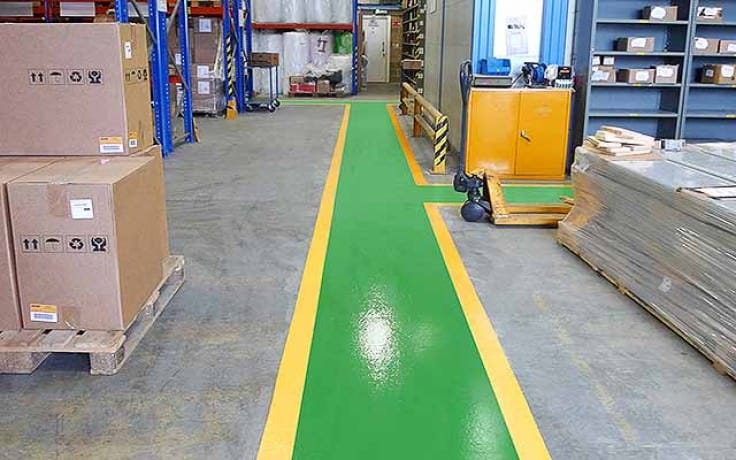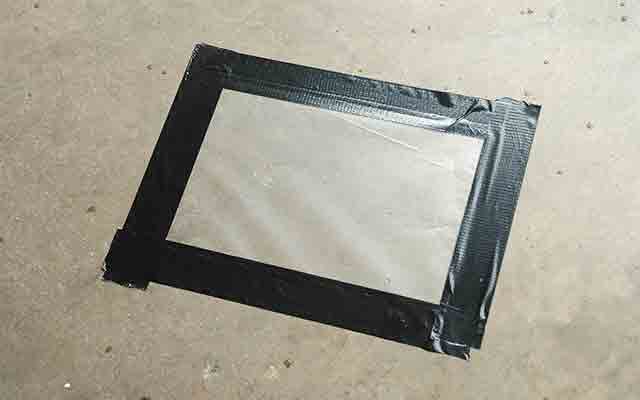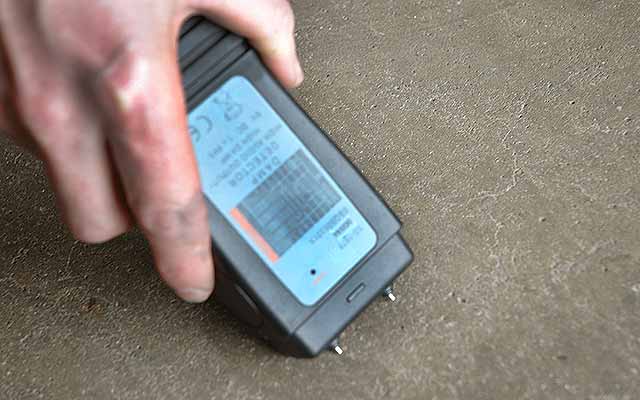If you were laying a new concrete floor, would you know how to paint it?
Yes, you may retort – you have the knowledge and experience, the common sense or can read the Technical Data Sheets that are linked to the products on the Promain website.
But that might not be enough. How do you paint a new concrete floor? Well, first you must allow it to exude its excess moisture.
One of Promain’s regular customers had recently purchased 3M Scotchkote Thortex XF895 and 3M Scotchkote Liquid Line Marking LXF897. Trusting the knowledge and advice received from one of the Promain team, when the site manager predicted that the coating of a new concrete floor would progress within days, alarm bells began to ring.

The site manager stated that he had tested the relative humidity of the slabs and considered the actual moisture content of the concrete as irrelevant. In a nutshell though, if the coating of the concrete progressed, it would be a waste of time and money, both in labour and materials; the coating would fail.
Moisture Content
The total amount of moisture contained within the concrete, either as water or water vapour, is known as the “moisture content” and is generally expressed as a percentage of the mass of the concrete. Ultimately, it is critical to the performance and adhesion of the coating to the concrete that the concrete moisture content is at a widely accepted maximum level of 7% at the time of application (depending on individual circumstances).
Moisture in concrete is present in the capillary pores and smaller gel pores within the concrete matrix. The moisture may exist as either water (when the concrete is wet and the pores are saturated) or as water vapour. This provides a level of relative humidity within the concrete material. The amount of water vapour and hence relative humidity within the concrete, may vary significantly over time. This is as water vapour moves in or out of the concrete in order to establish an equilibrium with the changing ambient conditions.
What Are The Effects of Excess Moisture in A Concrete Floor?
If excess moisture is present in the concrete when the coating is applied, it will become trapped under that coating. Over time, hydrostatic pressure will force that moisture upwards. This can cause blisters in the coating and rapid deterioration and delamination of the paint.
It is worth considering what type of concrete mixture is used. A particularly dry mix not only reduces the curing time of the concrete but is generally regarded as offering higher strength values. The addition of concrete admixtures help improve many properties in the concrete, e.g. Flow, hardness, strength, curing times and waterproofing, etc. This may be an option for heavy use environments where a quicker turnaround is required.
There are many ways to test the moisture content of the concrete. A simple, but visually effective method is the ASTM D-4263 “plastic sheet method”. This is where a plastic sheet is tightly taped to a section of the concrete. A humidity test is taken after 72 hours by placing a dew point hygrometer under the plastic sheeting.

In any event, the “moisture content” of the concrete must not be overlooked prior to the coating application process. Application of the coating to the floor before it is sufficiently dry will result in a premature breakdown.
A general ‘rule of thumb’ is a month of drying time for every 25 mm of (wet mix) concrete depth. In other words, a flooring that has a depth of 300mm is expected to take at least a year to reach the prime time to apply the required coating.
For this reason, consider the phrase ‘Act haste repent at leisure’, when considering your painting projects. Or contact Promain for more assistance and to purchase the correct product for your project.


